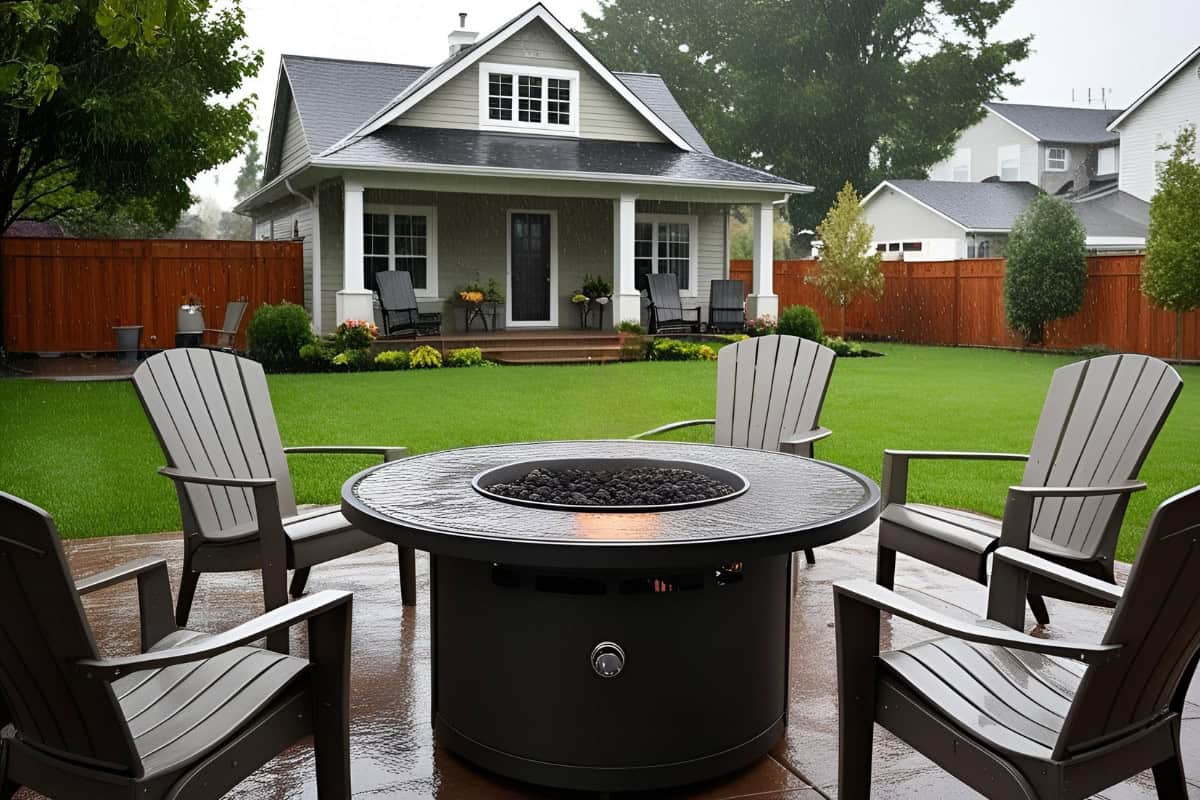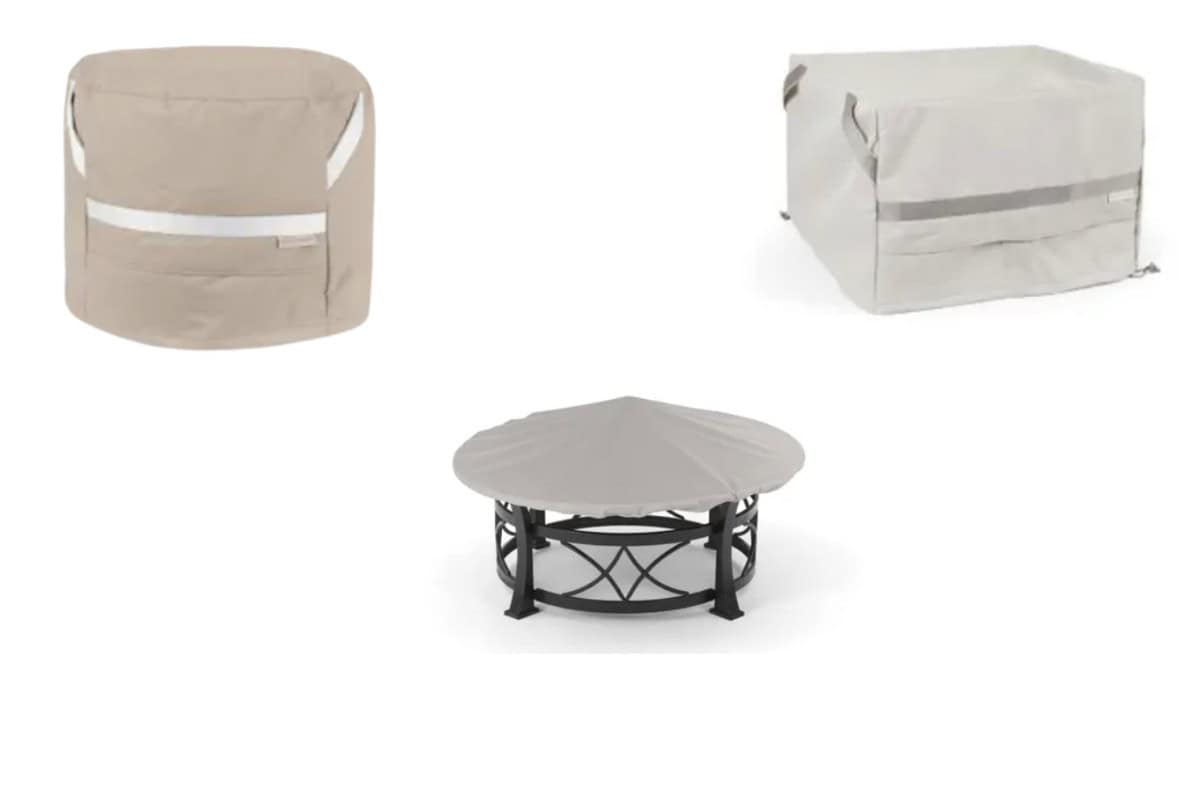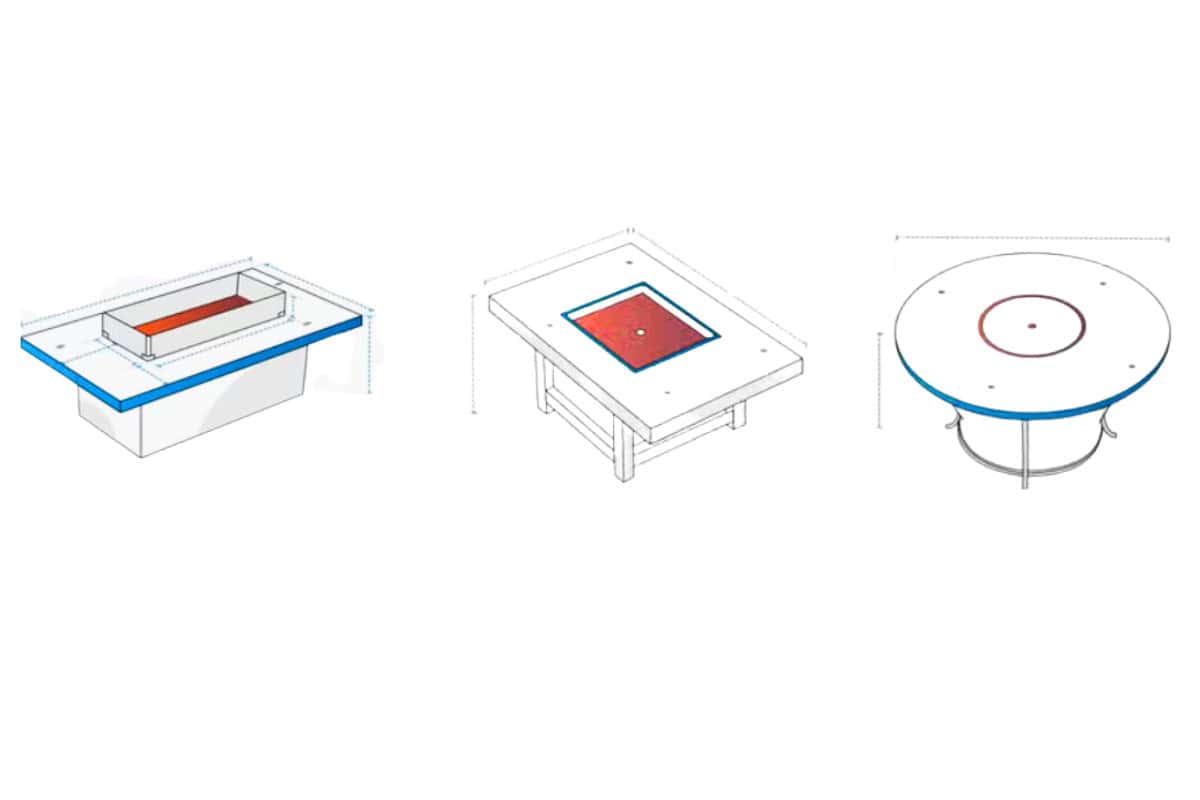
A gas fire pit cover can double the lifespan of your fire pit—experts say uncovered fire pits show signs of wear up to 50% faster.
A gas fire pit cover is a weather-resistant barrier that shields your fire pit from rain, UV rays, dirt, and hungry pests.
It’s not just a nice-to-have—it’s a key part of protecting your investment and keeping your fire pit looking and working like new.
Skip the cover, and you’ll likely face rusted burners, faded finishes, and costly repairs. In this post, you’ll learn why the right cover is essential, what happens if you don’t use one, how to pick the best option, plus care tips to save money and frustration.
If you want the full scoop on fire pit cover requirements and smart protection strategies, you’ll find answers and actionable steps to help you safeguard your backyard centerpiece.

The True Cost of Going Coverless
Using a gas fire pit cover may seem optional, but skipping this simple step can quickly drain your wallet and ruin your outdoor experience.
Let’s dig into what really happens to your gas fire pit when you decide to leave it exposed to the elements, and why going coverless often leads to much more than minor inconvenience.
Damage from Weather and the Elements
When you leave a gas fire pit uncovered, it faces a daily battle against rain, snow, UV rays, and debris.
Each of these takes a toll:
- Rain and snow cause rust on burners, fittings, and even on so-called “weather-resistant” finishes.
- UV exposure weakens paint and finishes, making your fire pit look old before its time.
- Wind-blown debris (leaves, dust, pollen) can clog burner ports and block vents, affecting performance.
Over time, this constant exposure leads to more than just a dirty fire pit. Rust weakens structures, while moisture and dirt can corrode burner parts, leading to expensive replacements.
Without a gas fire pit cover, you’re setting yourself up for frequent part swaps and frustrating downtimes.
Increased Maintenance and Repairs
No cover means more cleaning, more scrubbing, and more time spent fixing problems that never had to start.
You’re likely to notice:
- Frequent burner clogs and sputtering flames
- Unsightly rust spots that spread beyond the surface
- Ignition problems due to moisture in sensitive electrical parts
Not only do you end up spending weekends on fire pit repairs, but you’ll also need replacement parts sooner.
Coverless fire pits almost always require more frequent servicing—and those costs add up quickly.
If you want clear, actionable tips on how to keep rust away (with or without a cover), see these practical steps at preventing fire pit rust.
Even with extra care, no routine matches the protection a well-fitted gas fire pit cover gives.
Shortened Lifespan and Lost Value
A fire pit is an investment, not just in your backyard’s look but in your ability to relax and entertain. By skipping the cover, you cut that investment’s life in half.
Most uncovered gas fire pits show serious signs of wear in just 1-2 years, while covered units can easily last five years or more without major repairs.
Consider the replacement costs—not just of the fire pit itself, but of decorative stones, glass beads, or custom finishes. A cover protects all of it, saving you hundreds of dollars over time.
Loss of Safety and Enjoyment
A neglected, rusty, or malfunctioning gas fire pit isn’t just an eyesore—it’s a possible safety hazard. Faulty burners mean uneven flames or surprise flare-ups.
Blocked vents or wet ignition systems risk gas build-up and failed starts.
A clean, covered fire pit is safer to use, every time. If you’re thinking about placement and safe habits, see the details at fire fit placement Ideas.
The cost of going coverless isn’t just dollars and cents. It’s your time, safety, and the trouble-free enjoyment you expect when lighting your fire pit on a cool evening.
The smart move is to see a gas fire pit cover as a simple form of insurance that pays you back every season.

Key Protection Benefits of a Gas Fire Pit Cover
A quality gas fire pit cover does more than just hide your fire pit when not in use. The right cover blocks out the worst that weather, pests, and daily grime can throw at your outdoor feature.
Let’s break down how a cover keeps your investment safe and running beautifully.
Shields Against Weather Damage
Your gas fire pit faces rain, snow, sun, and sleet over the seasons. A cover forms a strong layer of defense that keeps moisture from soaking into burners, lines, and finishes.
Rain and melting snow can slip into tiny cracks, leading to rust and corrosion. Prolonged sun exposure fades and cracks paint, leaving your fire pit with peeling, uneven surfaces.
By covering your fire pit, you:
- Prevent early rust and corrosion on metal parts.
- Protect finishes from UV fading and sun damage.
- Reduce water pooling inside your burner pans and trays, stopping costly repairs before they begin.
For a closer look at how to prevent rust and extend your fire pit’s lifespan, check out the detailed DIY steps at how to prevent a fire pit from rusting.
Blocks Out Dirt, Debris, and Wildlife
A gas fire pit cover acts like a shield against falling leaves, dust, and pollen. These can block burner ports and vents, making your fire uneven or weak.
Covers also help keep curious critters out—rodents and insects often slip inside, nesting and leaving messes that invite fire risk.
Key benefits include:
- Cleaner burners and trays, with less time spent on scrubbing.
- Protection from rodents, birds, and bugs looking for shelter or food.
- Reduced risk of vent and port blockages that lead to poor ignition.
Keeping debris out is the most hands-off way to cut down on repairs and enjoy more relaxing evenings by the fire.
Minimizes Cleaning and Maintenance
Using a gas fire pit cover means you skip the biggest messes. Covered fire pits only need basic wipe-downs, saving time and elbow grease.
With a clean, dry fire pit each time you open the cover, you can focus on relaxing—rather than ruining your fire pit with harsh chemicals and endless scrubbing.
Maintaining your fire pit is less about work, more about quick check-ups.
This simple step often means you can:
- Catch minor issues before they grow—like tiny rust spots or loose fittings.
- Extend the gap between deep cleans—an easy routine vs. a chore.
For a deeper dive into why cleaning matters and how to keep your fire pit fresh, read about ways to stop fire pit rust.
Protects Investment and Looks
A beautiful finish and smart design are what make a fire pit the focal point of any backyard. A faded shell or corroded burners take away from that wow factor.
A gas fire pit cover preserves not just the hardware, but your fire pit’s value and curb appeal.
The long-term results:
- Paint stays vivid, surfaces stay sleek.
- Less risk of permanent stains from sap, bird droppings, or water marks.
- Higher resale value if you ever upgrade or move.
Smart owners know the cost of a quality cover is far less than replacing finishes or repair bills down the line.
Increases Safety and Ready-to-Use Reliability
Moisture and gunk in your fire pit can cause gas to sputter or not ignite. With your fire pit always dry and covered, you cut down on gas build-up risks, failed starts, and fire hazards.
A covered fire pit is one you can trust to work when you want it—no frustrating surprises.
Keep your setup safe and ready to go by exploring more fire pit safety essentials.
Takeaway: Consistent Protection, Less Hassle
A gas fire pit cover packs big benefits into a simple package. It shields your investment from damage, keeps cleaning easy, and secures your backyard centerpiece for every gathering.
For more on why skipping a cover costs you in the long run, see expert advice at The Cover Blog and keep your fire pit looking and working its best.

How to Choose the Right Gas Fire Pit Cover
Choosing a gas fire pit cover is just as important as deciding to use one at all. The right cover isn’t just an afterthought—it’s what stands between your fire pit and all the things that can damage it.
With so many options on the market, knowing exactly what to look for makes the decision much simpler and protects your investment from day one.
Get the Proper Size and Fit
A cover that fits well gives the best protection. Too small, and it won’t shield the edges or may get stuck on sharp corners.
Too large, and it becomes a sail in the wind, allowing rain and debris to slip inside.
Always start by measuring your gas fire pit—width, length, and height—to find the right size.
- Check for a snug fit: Look for covers with elastic hems, drawstrings, or fitted edges to keep them tight.
- Avoid excess fabric: Baggy covers collect water and dirt, risking mold and mildew.
- Consider custom covers for uniquely shaped or built-in fire pits.
Choose Durable, Weather-Resistant Materials
The best gas fire pit covers use tough fabrics that hold up to all seasons. Cheap, thin plastics tear with a little wind and do very little against UV rays.
Top materials keep out both rain and sun without breaking down.
- Heavy-duty polyester is a favorite for its balance of strength and flexibility.
- Vinyl-backed covers boost water resistance and last for years.
- Look for UV protection to keep sun from fading your cover or the fire pit below.
If you’re in a region with lots of humidity or snow, investing in a thicker, weatherproof option pays off long-term.
This reduces rust, corrosion, and keeps your gas fire pit looking sharp. Explore tips on dealing with fire pit rust in wet climates at ways to stop fire pit rust.
Pick Smart Features for Extra Protection
Not all fire pit covers are made the same. Some extras make care and use much easier, while adding a bit more to your peace of mind.
- Air vents prevent wind lofting and allow moisture to escape.
- Handles make removing and replacing the cover easy, even for larger models.
- Securing straps or buckles keep the cover in place on blustery days.
When using your fire pit regularly, these features let you remove the cover quickly and keep it from flying into the neighbor’s yard during storms.
Style, Color, and Blending In
While protection is the main goal, you don’t have to sacrifice looks. Most gas fire pit covers come in neutral tones that blend easily into any patio or garden style.
Darker colors tend to hide stains better and show wear slower.
- Neutral shades like gray, black, or tan look clean year-round.
- Patterns or textured finishes help hide dirt, pollen, or water spots.
A good-looking cover keeps your space tidy and inviting, even when the fire pit isn’t in use.
Ease of Cleaning and Maintenance
Look for covers that clean up with just a simple wipe or spray down with the hose. Avoid materials that stain or trap dirt easily.
Removable, washable covers are best if you live in an area with lots of pollen, leaves, or bird droppings.
- Covers with smooth surfaces shed water and debris fast.
- Machine washable options make care as easy as laundry day.
Keeping your gas fire pit cover clean not only protects the fire pit, but also extends the life of the cover itself.
Trustworthy Brands and Warranties
Spending a little more for a trusted brand often means better materials, smart extras, and solid warranties.
Many top covers come with at least a one-year guarantee, giving you peace of mind against early rips or fading.
Research reputable options and don’t be afraid to compare reviews before purchasing. Protecting your fire pit is an ongoing investment, not a one-time fix.
Choosing the right gas fire pit cover comes down to fit, material, durability, features, and style. Taking the time now to get it right sets you up for more reliable, trouble-free nights by the fire.

Installation and Maintenance Best Practices
When you use a gas fire pit cover, you’re not only protecting your investment from the elements, but you’re also extending the life and good looks of your fire pit.
Proper installation and regular upkeep make all the difference. To keep your gas fire pit ready for every gathering, follow these best practices for installing your cover and maintaining both the fire pit and the cover itself.
How to Install a Gas Fire Pit Cover for Maximum Protection
Place the gas fire pit cover on a cool, dry fire pit. Always check that the burners are completely off and the fire pit has cooled before covering.
This step prevents heat from trapping moisture or causing warping.
Follow these basics for a proper fit each time:
- Remove any debris or standing water before covering.
- Align the cover so it drapes evenly over all sides.
- Pull the cover snug using built-in drawstrings, buckles, or elastic hems to secure it.
- Make sure vents on the cover are clear to allow airflow and prevent moisture buildup.
If your fire pit sits on a balcony or tight space, keep the area clear of clutter and flammable materials for safe use.
These extra steps help you avoid unwanted fire risks and keep your outdoor area looking tidy. For ideas and safety considerations, see more at Balcony Fire Pit Safety Tips.
Routine Cleaning and Inspection
A covered gas fire pit stays cleaner, but occasional upkeep is still needed. Set a regular schedule to inspect, clean, and catch small problems early.
Here’s how:
- Wipe down the cover every few weeks to remove dust, leaves, and bird droppings.
- Inspect the cover for holes, loose seams, or wear. Address minor issues with repair kits or strong tape.
- Clean the fire pit itself every time you remove the cover—look for buildup inside burner trays or vent ports.
- After cleaning, make sure all parts are dry before replacing the cover, as trapped moisture accelerates rust.
This simple routine protects against corrosion, mildew, and debris clogs, reducing the risk of costly repairs.
Seasonal Storage and Weather Readiness
In harsh climates, regular weather checks help prevent surprises.
If you face heavy winds, snow, or storms:
- Use weighted objects or additional straps to secure the cover during storms.
- Remove the cover during strong winds if it’s safe, and replace it as soon as the weather calms.
- In snowy areas, gently brush off accumulated snow to avoid stretching the material.
- For extended periods without use, store the cover in a dry, clean spot, ideally indoors, to keep it in top shape.
These steps minimize risk of cover damage or water intrusion. They also keep the gas fire pit looking and working its best when you’re ready to use it again.
Simple Steps for Extra Longevity
Following a few key habits will extend the life of both your gas fire pit and its cover:
- Never use the cover on a hot fire pit.
- Sweep off dirt and standing water promptly.
- Regularly check for loose parts or fittings on both the cover and the fire pit.
- Store the cover away from direct sun when not in use for extended periods.
Stick with these habits, and your backyard feature will offer lasting enjoyment, reliable performance, and great looks season after season.

FAQs: Do I Need a Gas Fire Pit Cover?
Yes, using a gas fire pit cover all year is the best way to keep your fire pit in peak shape. Weather does not take a season off.
Rain, sun, and wind each cause long-term damage when the fire pit sits exposed.
Even during the summer, UV rays can fade finishes and heat-cold cycles accelerate wear.
A cover makes a big difference in protecting hardware, finishes, and burners in every season.
Cleaning your gas fire pit cover takes only a few minutes and pays off in extended life and looks.
Depending on your outdoor environment:
– Wipe down every two to four weeks if exposed to lots of leaves, pollen, or pet hair.
– Hose off stuck-on dirt or droppings as needed.
– Always dry thoroughly before putting it back on the fire pit.
If you notice buildup or discoloration, more frequent cleaning is best. Store your cover indoors if you won’t use the fire pit for weeks.
If your fire pit has an unusual shape or extra features—like controls, glass, or decorative surrounds—a custom cover can provide the only way to get full edge-to-edge protection.
Custom covers fit perfectly, block debris and water more effectively, and often last longer because they avoid stress from stretching or sagging.

Wrap-up: Do I Need a Gas Fire Pit Cover?
A gas fire pit cover stands out as an essential piece of outdoor equipment for anyone who values lasting performance and appearance.
By blocking moisture, UV rays, and debris, a cover safeguards your fire pit against rust, fading, and costly repairs.
Regular use of a tailored, high-quality cover cuts down on cleaning time and wards off pests, keeping your backyard centerpiece ready for every gathering.
Choose a cover that matches your local climate and fits snugly for year-round peace of mind. For buyers who want the best experience, research and compare models before purchasing—smart upgrades protect your investment for seasons to come.
Interested in getting the most from your setup? Explore other must-haves in the Recommended Fire Pits for Backyards guide.
Securing a durable gas fire pit cover today will save you money, time, and frustration down the line.
Thank you for reading!


